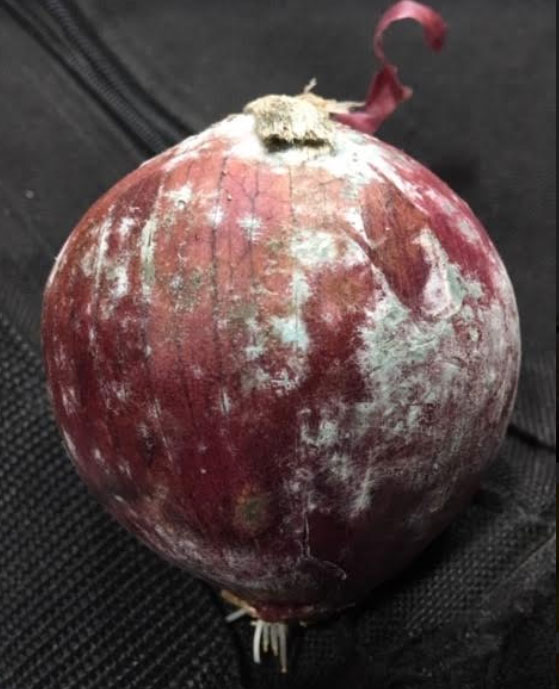When you encounter onions with surface mold you’ll have to make a quick determination. Is the mold a black mold, and you are finding it between the outer scales, or is the mold a white or light blue surface mold? If you are finding black mold, it most likely is a defect, scored against the tolerance for defects.

But, if the mold is lighter in color, affecting the surface, as seen above, you may be surprised to learn it probably won’t be a defect. I am sure everyone would be concerned if a load of onions arrived with onions looking like this. For onions with surface mold, it is scored as a defect when appreciably affected. This means the surface mold is not a free from defect, but some surface mold is allowed to be on an onion. If you think the mold is materially affecting the onion, you can then score the onion as a defect. But here’s the catch, the onion is not scored against the tolerance for defects. Onions scored as defects by surface mold are scored against an “allowance,” not the defect tolerance. This allowance reads as follows: “§51.2849/51.3209 Damage…Dirt, staining or other foreign matter when more than 20 percent of the onions in a yellow, brown or red lot, or more than 15 percent of the onions in a white lot are appreciably stained.”
What does this mean? If you find onions with surface mold, that affects the appearance, the grade standard allows up to 20% of onions…..more than 20% then the lot does not meet U.S. No.1
Simply put, if you are finding onions with surface mold, and the average for all your samples comes out to, let’s say 18%, you are in grade. If the moldy onions are averaging, let’s say 22%, then you are out of grade.
This procedure is followed for loads of onions being inspected on the U.S. No.1 basis, or Good Delivery Standards.

No Comments on “Onions- Surface Mold”